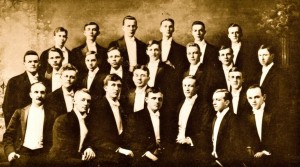Whenever I hear of complaints about the makeup of the architectural profession, whether it concerns race or gender, I think of a comment by my old teacher, Norbert Schoenauer. He observed that a disproportionate number of the architects working in the housing field in Canada were either Jews or immigrants. He cited Irving Grossman, Jack Diamond, Peter Dickinson, Oscar Newman, Sandy and Blanche van Ginkel, Len Warshaw, Andre and Eva Vescei–and himself. Schoenauer surmised that since housing commissions were less lucrative, they were neglected by established architects, and hence became an opening for “outsiders.” Incidentally, the same was true in the US, think of Emery Roth, Clarence Stein, Bertrand Goldberg, Percival Goodman, and Morris Lapidus. Or Albert Kahn (an immigrant as well as a Jew), who built his practice on designing factories, another neglected field.
Social connections have always been a big part of a successful architectural career. In the early part of the twentieth century, WASP clients tended to hire WASP architects–Burnham, McKim, Hastings, Cram, Platt, Pope, Delano, Atterbury. This started to change when European immigrants (some of whom were also Jews), came to the fore: Schindler, Neutra, Mies, Gropius, Breuer, Belluschi, Sert. When Louis I. Kahn began his career, he joined forces with Oscar Stonorov, likewise an immigrant, and designed mainly housing, but by the 1960s, things had changed and Kahn began to get institutional commissions, and became the leading architect in the US. For the first time, many of the the most prominent names in American architecture were no longer WASPs: not only Kahn, but also Gordon Bunshaft, Max Abramovitz, Minoru Yamasaki, I. M. Pei, Gyo Obata, Frank Gehry, Richard Meier, Robert A. M. Stern, Cesar Pelli. This shift was less due to open-mindedness, although that is a part of the story, as to a change in the nature of the architectural clientele. Yes, talent is important, but you also have to follow the money.


Thanks Witold.
I enjoy your research.